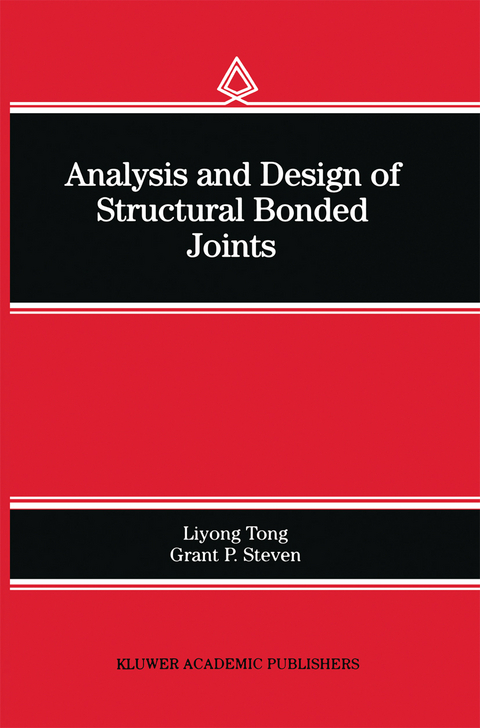
Analysis and Design of Structural Bonded Joints
Springer (Verlag)
978-0-7923-8494-6 (ISBN)
1 Introduction.- 1.1 Background.- 1.2 Joint Classifications.- 1.3 Adhesive Characterisation.- 1.4 Fatigue and Durability.- 2 Stress Analysis Techniques.- 2.1 Introduction.- 2.2 Adhesive Properties.- 2.3 Analytical Analysis.- 2.4 Finite Element Analysis.- 2.5 Correlation of Analytical, Fea and Test Results.- 3 Failure Criteria and Strength Prediction.- 3.1 Introduction.- 3.2 Strength of Materials Criteria.- 3.3 Fracture Mechanics Criteria.- 3.4 Applications of Strength of Materials Criteria.- 3.5 Applications of Fracture Mechanics Criteria.- 3.6 Fatigue Strength Prediction.- 4 Damage Tolerance.- 4.1 Introduction.- 4.2 Effect of Debond or Voids in Adhesive.- 4.3 Effect of Damage in Adherends.- 4.4 Modeling of Single Lap Joints.- 4.5 An Analytical Model.- 4.6 Summary.- 5 Optimum Design.- 5.1 Introduction.- 5.2 1-D Linear Optimum Analysis.- 5.3 Methods of Structural Optimization.- 5.4 Research on Shape Optimization of Bonded Joints.- 5.5 Application of Shape Basis Vector Technique.- 5.6 Application of the Eso Method.- 6 Effect of Transverse Stitching.- 6.1 Introduction.- 6.2 Manufactruing.- 6.3 Single-Lap Joints — Experimental Results.- 6.4 Strength Prediction.- 6.5 Numerical Modeling and Angled Stitching.- 7 Selected Applications.- 7.1 Introduction.- 7.2 Aerospace.- 7.3 Marine.- 7.4 Ground Transportation.- 7.5 Civil.- References.
| Zusatzinfo | XIII, 288 p. |
|---|---|
| Verlagsort | Dordrecht |
| Sprache | englisch |
| Maße | 155 x 235 mm |
| Themenwelt | Naturwissenschaften ► Physik / Astronomie ► Mechanik |
| Technik ► Bauwesen | |
| Technik ► Maschinenbau | |
| ISBN-10 | 0-7923-8494-6 / 0792384946 |
| ISBN-13 | 978-0-7923-8494-6 / 9780792384946 |
| Zustand | Neuware |
| Haben Sie eine Frage zum Produkt? |
aus dem Bereich


